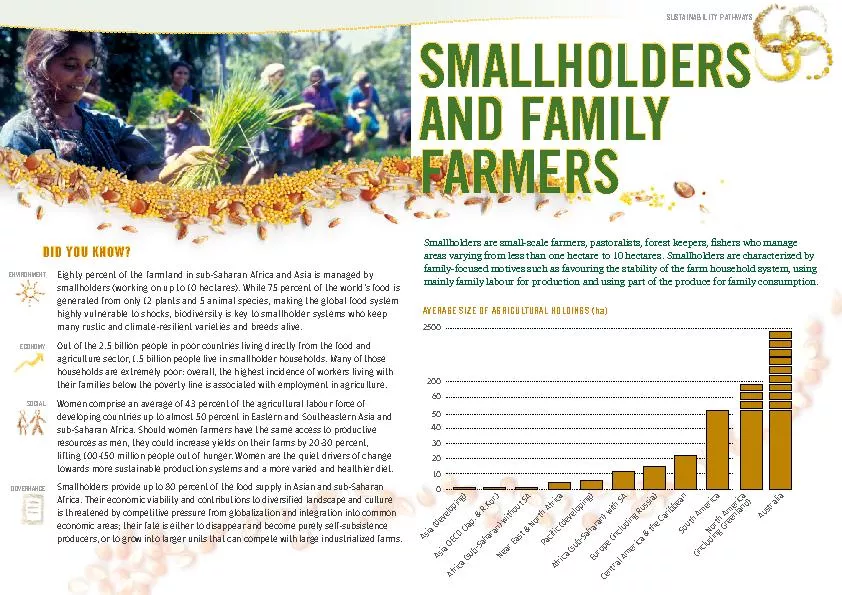PDF-SUSTAINABILITY PATHWAYS
Author : giovanna-bartolotta | Published Date : 2016-08-03
ENVIRONMENT ECONOMY SOCIAL GOVERNANCE DID YOU KNOW Eighty percent of the farmland in subSaharan Africa and Asia is managed by smallholders working on up to 10 hectares
Presentation Embed Code
Download Presentation
Download Presentation The PPT/PDF document "SUSTAINABILITY PATHWAYS" is the property of its rightful owner. Permission is granted to download and print the materials on this website for personal, non-commercial use only, and to display it on your personal computer provided you do not modify the materials and that you retain all copyright notices contained in the materials. By downloading content from our website, you accept the terms of this agreement.
SUSTAINABILITY PATHWAYS: Transcript
Download Rules Of Document
"SUSTAINABILITY PATHWAYS"The content belongs to its owner. You may download and print it for personal use, without modification, and keep all copyright notices. By downloading, you agree to these terms.
Related Documents














